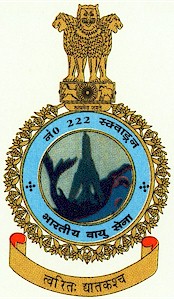람다1 조각가
Lambda1 Sculptoris| 관측 데이터 Epoch J2000.0 이쿼녹스 J2000.0(ICRS) | |
|---|---|
| 별자리 | 조각가 |
| 우측 상승 | 00h 42m 42.89190s[1] |
| 탈위임 | −38° 27′ 48.5416″[1] |
| 겉보기 크기 (V) | +6.05[2] (6.612 + 7.041)[3] |
| 특성. | |
| 스펙트럼형 | B9.5 V[4] + A9(V)[5] |
| U-B색지수 | −0.13[2] |
| B-V색지수 | −0.03[2] |
| 아스트로메트리 | |
| 방사 속도 (Rv) | 11.1±0.6km[6]/s |
| 고유 운동 (μ) | RA: +2.56마스[1]/yr Dec.: −6.72[1]mas/yr |
| 시차 (π) | 6.89 ± 0.71[1] 마스 |
| 거리 | 약 470리 (약 150pc) |
| 절대치수 (MV) | +0.27[7] |
| 세부 사항 | |
| λ1 Scl A | |
| 미사 | 2.83±0.13[8] M☉ |
| 루미도 | 94[8] L☉ |
| 온도 | 10,351[8] K |
| 회전 속도 (v sin i) | 초속[8] 35km/s |
| 기타 지정 | |
| 데이터베이스 참조 | |
| 심바드 | 자료 |
da1 조각가의 라틴어인1 람다 조각가는 조각가의 남쪽 별자리에 있는 이중 항성계통이다.육안으로 볼 수 있는 가시성 하한에 가깝고, 겉보기 크기를 합치면 +6.05이다.[2]지구에서 측정된 연간 시차 변화량 6.89 mas를 바탕으로 태양으로부터 약 470광년 떨어진 곳에 위치한다.[1]그 거리에서는 성간 먼지로 인해 0.026의 소멸계수만큼 시각적 크기가 감소한다.[10]
밝은 별인 성분 A는 시각적 크기가 6.6인 반면, 2차 성분인 성분 B는 진도 7.0이다.[3]2000년 현재 이 쌍은 위치각 14.0°를 따라 0.737 아크초의 각이 분리되었다.[3]성분 A는 B9.5V의 별 분류를 가진 청백색 후예 B형 주계열성이다.[4]태양 질량의 2.8배를 가지고 있으며 광권으로부터 태양 광도의 94배를 유효 온도 10,351K로 방사한다.[8]질량비율은 0.609로, 2차 질량이 1차 질량만큼 60.9%에 불과하다.[11]
참조
- ^ a b c d e f van Leeuwen, F. (2007), "Validation of the new Hipparcos reduction", Astronomy and Astrophysics, 474 (2): 653–664, arXiv:0708.1752, Bibcode:2007A&A...474..653V, doi:10.1051/0004-6361:20078357, S2CID 18759600.
- ^ a b c d Westerlund, B. E. (1963), "Three-colour photometry of early-type stars near the galactic poles", Monthly Notices of the Royal Astronomical Society, 127: 83, Bibcode:1963MNRAS.127...83W, doi:10.1093/mnras/127.1.83.
- ^ a b c Fabricius, C.; Makarov, V. V. (April 2000), "Two-colour photometry for 9473 components of close Hipparcos double and multiple stars", Astronomy and Astrophysics, 356: 141–145, Bibcode:2000A&A...356..141F.
- ^ a b Houk, Nancy (1979), "Michigan catalogue of two-dimensional spectral types for the HD stars", Michigan Catalogue of Two-dimensional Spectral Types for the HD stars. Volume_3. Declinations −40_ƒ0 to −26_ƒ0, Ann Arbor, Michigan: Dept. of Astronomy, University of Michigan, 3, Bibcode:1982mcts.book.....H.
- ^ Beavers, W. I.; Cook, D. B. (1980). "Scanner studies of composite spectra. I – Dwarfs". Astrophysical Journal Supplement Series. 44: 489. Bibcode:1980ApJS...44..489B. doi:10.1086/190702.
- ^ de Bruijne, J. H. J.; Eilers, A.-C. (October 2012), "Radial velocities for the HIPPARCOS-Gaia Hundred-Thousand-Proper-Motion project", Astronomy & Astrophysics, 546: 14, arXiv:1208.3048, Bibcode:2012A&A...546A..61D, doi:10.1051/0004-6361/201219219, S2CID 59451347, A61.
- ^ Anderson, E.; Francis, Ch. (2012), "XHIP: An extended hipparcos compilation", Astronomy Letters, 38 (5): 331, arXiv:1108.4971, Bibcode:2012AstL...38..331A, doi:10.1134/S1063773712050015, S2CID 119257644.
- ^ a b c d e Zorec, J.; Royer, F. (January 2012), "Rotational velocities of A-type stars. IV. Evolution of rotational velocities", Astronomy & Astrophysics, 537: A120, arXiv:1201.2052, Bibcode:2012A&A...537A.120Z, doi:10.1051/0004-6361/201117691, S2CID 55586789.
- ^ "lam01 Scl – Double or multiple star", SIMBAD Astronomical Database, Centre de Données astronomiques de Strasbourg, retrieved 2017-05-30.
- ^ Paunzen, E.; et al. (October 2006), "An empirical temperature calibration for the Δ a photometric system. II. The A-type and mid F-type stars", Astronomy and Astrophysics, 458 (1): 293–296, arXiv:astro-ph/0607567, Bibcode:2006A&A...458..293P, doi:10.1051/0004-6361:20064889, S2CID 18219735.
- ^ Makarov, Valeri V.; Fabricius, Claus (2021). "Astrometric Mass Ratios of 248 Long-period Binary Stars Resolved in Hipparcos and Gaia EDR3". The Astronomical Journal. 162 (6): 260. arXiv:2109.11951. Bibcode:2021AJ....162..260M. doi:10.3847/1538-3881/ac2ee0. S2CID 237635330.


